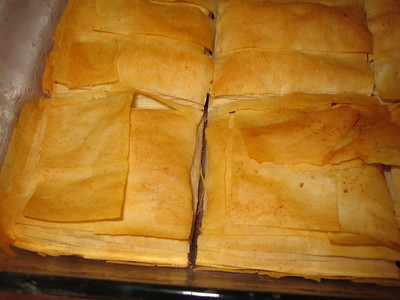In fact the whole website is quite fascinating, I'll be returning to it for inspiration for sure.
I'll repeat the recipe here for my own reference and ready tweaked for the next bake. This time I got 18 buns out of this batch at 54 g each.
Ingredients
Bun dough
500 g strong white flour
20 g milk powder
75 g caster sugar
6 g salt
8 g instant yeast
1 lightly whisked egg
270 g water
60 g unsalted butter at room temperature
Fillings
180 g butter cut into 10 g pieces and frozen
or
18 tsp dulce de leche or toffee from condensed milk
Coffee topping
200 g unsalted butter at room temperature
160 g icing sugar
3 lightly whisked eggs
3 tbsp instant coffee
1 tbsp water
1 tsp ground cinnamon
200 g plain flour
Method
- Mix together flour, milk powder, sugar and salt in the bowl of a dough mixer.
- Add the yeast, whisked egg and water and let the machine knead the dough until nearing complete gluten development.
- Turn out the dough onto a work surface and add the butter. The dough should be fairly sticky at this point, but work it to incorporate the butter.
- Weigh the dough and work out how much each bun should weigh, then cut up into pieces and roll into small balls.
- Let the dough rest for 10 minutes and line sheets with baking paper.
- Take a ball and flatten it a little with the palm of the hand. Place a piece of the filling in the middle and pinch together the dough around it, making sure it is well sealed.
- Re-shape back into a ball shape and place on the baking sheet. Repeat with all the buns and let proof for 45 minutes.
- While the dough buns are proofing, make the topping by first creaming the butter and icing sugar together.
- Add the eggs a little at a time and incorporating well.
- Dissolve the instant coffee in the water and add also the cinnamon, then add to the topping mixture.
- Sift in the flour a bit at a time and incorporate well. Finally, transfer the mixture to a piping bag with a small (about 5 mm) round nozzle.
- Pre-heat the oven to 200 degrees C and when the buns have finished proofing, carefully pipe the topping mixture over them in a spiral shape starting from the middle.
- Bake until the topping looks dry and starts getting a hint of brown, about 15 - 20 minutes.
- Take out, let rest for a couple of minutes, then transfer to a wire rack and let cool further.
- Best served warm, so either serve straight away or heat up in the microwave for a few seconds.
The original recipe instructed to make the topping first and chill in the fridge. This is OK, but it goes rather stiff and is hard to pipe. I actually transferred it into the piping bag before chilling and perhaps if I'd done this afterwards, I would have softened it up in the process. However, I don't think the chilling was needed. Unfortunately I cut too large a hole in the piping bag, so the buns looked like they had dog poo on them.
But once the buns are in the oven, the topping melts and becomes a thin coat layer over the buns, very nice.
Further, despite my efforts at pinching the dough together around the butter, almost all buns opened up and the butter oozed out. However, I didn't use frozen butter pieces, but room temperature ones. The idea of freezing occurred to me as I took the baking trays out of the oven, precariously balancing them so as not to drip the melted butter over the floor.
And I also didn't pipe symmetrically, so there were bare patches on the buns, I think using a narrow nozzle will help there too and also reduce waste - I used about two-thirds of the topping and as can be seen on the photo, a lot of that just slid down the sides. I have to work out what to do with the left-over topping too.
Now, flavour was less impressive, however I did follow the original recipe (2 tbsp instant coffee and a quarter of a teaspoon of ground cinnamon. So the coffee and cinnamon was barely noticeable and the whole buns were fairly neutral in flavour and a bit under-baked (though that's entirely my fault, I should have kept them in for a couple of minutes longer). I also felt they should be a little sweeter overall.
At this point I got the idea that I could have used my toffee-fied condensed milk I have in the larder as a filling and it would perhaps not have oozed out like the butter and the overall recipe would not need to be adjusted for sweetness. Letting my mind spin further, I wonder if ganache would work or if it would burn... Perhaps next time, I'll prepare different fillings for comparison.
Oh well, 16 buns to go, breakfast for the next few days is secured. As I put them away in the cake box, I noticed that the topping was no longer crunchy, but had gone soft. Maybe it needs more icing sugar too.
Finally, "à la Rotiboy" comes from the fact that this are the signature buns served at the bakery chain Rotiboy. I have a friend based in Kuala Lumpur and I'll drop him an e-mail to ask if he's tried them. It may be a while before I make my way to that part of the world.







